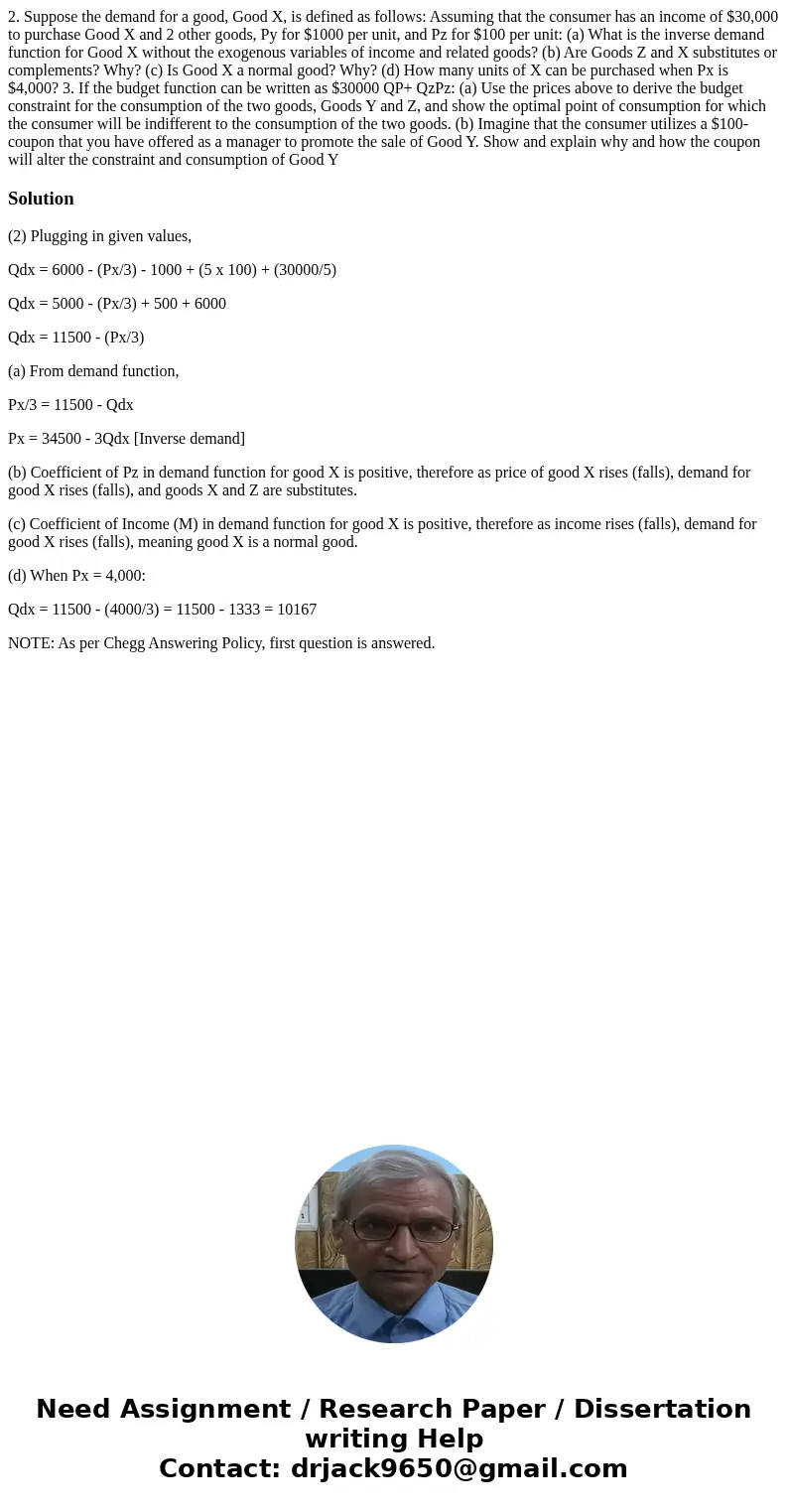2 Suppose the demand for a good Good X is defined as follows
2. Suppose the demand for a good, Good X, is defined as follows: Assuming that the consumer has an income of $30,000 to purchase Good X and 2 other goods, Py for $1000 per unit, and Pz for $100 per unit: (a) What is the inverse demand function for Good X without the exogenous variables of income and related goods? (b) Are Goods Z and X substitutes or complements? Why? (c) Is Good X a normal good? Why? (d) How many units of X can be purchased when Px is $4,000? 3. If the budget function can be written as $30000 QP+ QzPz: (a) Use the prices above to derive the budget constraint for the consumption of the two goods, Goods Y and Z, and show the optimal point of consumption for which the consumer will be indifferent to the consumption of the two goods. (b) Imagine that the consumer utilizes a $100-coupon that you have offered as a manager to promote the sale of Good Y. Show and explain why and how the coupon will alter the constraint and consumption of Good Y 
Solution
(2) Plugging in given values,
Qdx = 6000 - (Px/3) - 1000 + (5 x 100) + (30000/5)
Qdx = 5000 - (Px/3) + 500 + 6000
Qdx = 11500 - (Px/3)
(a) From demand function,
Px/3 = 11500 - Qdx
Px = 34500 - 3Qdx [Inverse demand]
(b) Coefficient of Pz in demand function for good X is positive, therefore as price of good X rises (falls), demand for good X rises (falls), and goods X and Z are substitutes.
(c) Coefficient of Income (M) in demand function for good X is positive, therefore as income rises (falls), demand for good X rises (falls), meaning good X is a normal good.
(d) When Px = 4,000:
Qdx = 11500 - (4000/3) = 11500 - 1333 = 10167
NOTE: As per Chegg Answering Policy, first question is answered.

 Homework Sourse
Homework Sourse